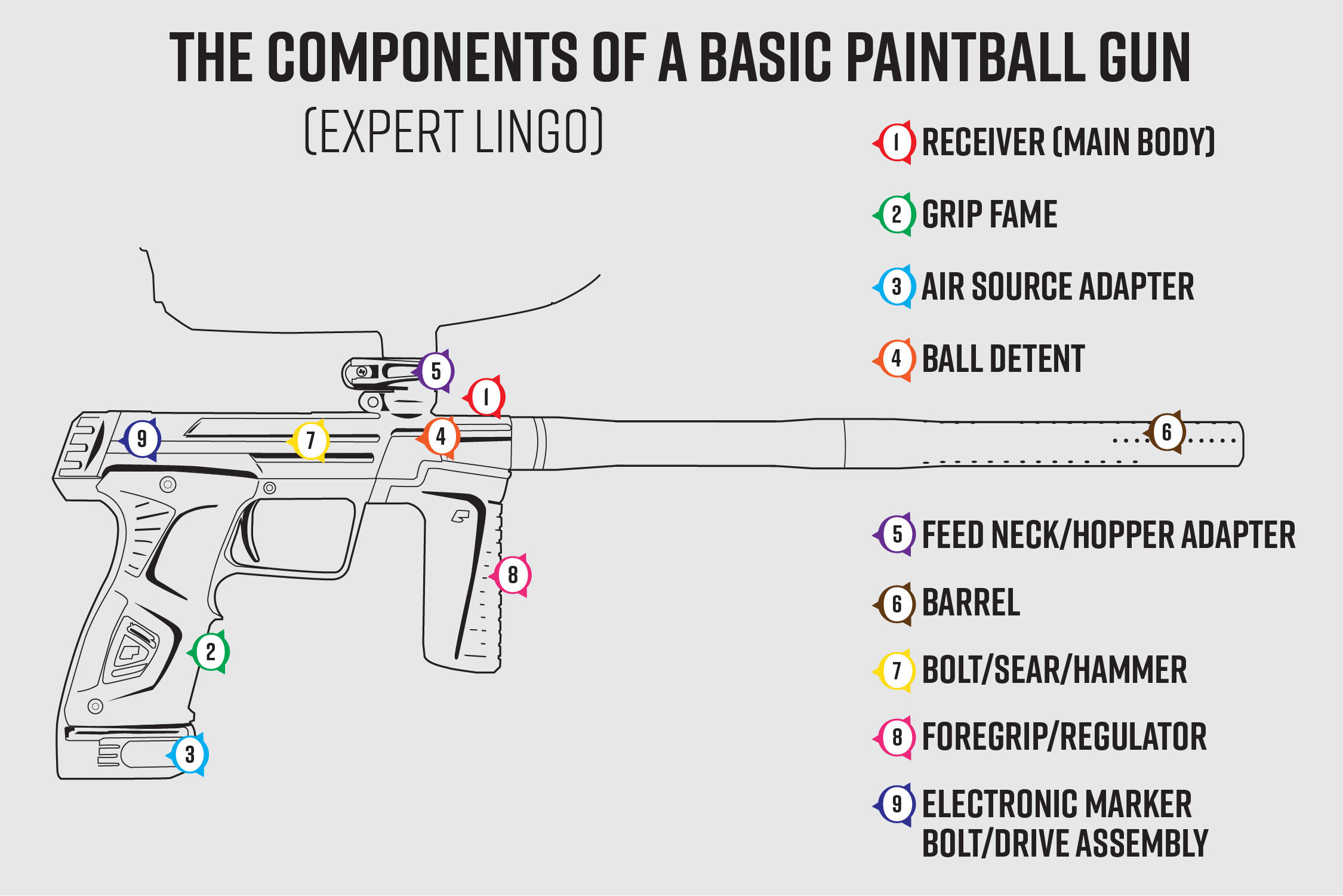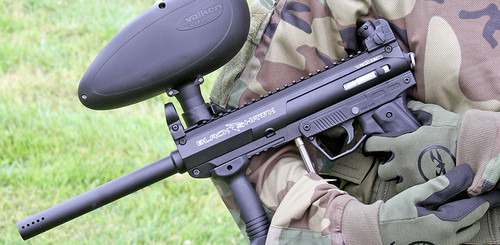Basic Components of a Paintball Gun
Posted by Josh Silverman on 21st Jul 2020
The Components of a Basic Paintball Gun
A modern paintball gun is a remarkable technological machine, the sum of dozens of components, parts and assemblies that all work together to shoot paintballs and power the game we love! From basic mechanical paintball guns at the hundred-dollar level, to high-end, electronic paintball guns costing over a thousand dollars, most paintball guns share a similar design that players of the game have come to know and understand.
Receiver (main body)
The receiver is the main body of a paintball gun generally made of metal such as aluminum. The receiver is attached to the grip frame, usually with two screws or thumbscrews. The receiver/main body houses the hammer, power tube, main spring, ball detent and bolt, or bolt system in the case of electronic, spool valve-style paintball guns.
Grip Fame
The grip frame houses the trigger mechanism, handgrips and the trigger safety, as well as electronic circuit boards, information screens, buttons and batteries in many electronic paintball guns. Some modern paintball guns even route air through the grip frame as a replacement for external hoses that could snag or fail.
Air Source Adapter
The air source adapter, sometimes called a bottle adapter, mounts to the bottom of the grip frame, and is the attachment point for the air bottle used to provide power to fire paintballs and re-cock the paintball gun. Many modern paintball guns offer an on/off bottle adapter, allowing players to turn air power on and off without removing the bottle.
Ball Detent
The ball detent (anti-double feed) is a small spring-like piece that holds each paintball in place in the gun’s breech inside the receiver while it is waiting to fire, preventing another paintball from trying to feed that may cause jams or broken paintballs.
Feed Neck/Hopper Adapter
The feed neck or hopper adapter of a paintball gun is located at the top of the paintball gun’s receiver near the front, just above the breech. This is the attachment point for a hopper or loader that feeds paintballs into the paintball gun for firing. Many modern paintball guns are equipped with an adjustable, or clamping hopper adapter that prevents the loader from falling off during play.
Barrel
The barrel’s purpose is to allow gas coming from the C02 or high-pressure tank time to push the ball forward and send it into flight and onto the player’s target accurately. The barrel threads into the main body at the front.
Foregrip/Regulator
The foregrip is located at the bottom front portion of the paintball gun’s receiver, in front of the grip frame, allowing a player to stabilize the paintball gun during firing by providing a solid grip for the shooter’s off-hand. Many modern electronic paintball guns house an air pressure regulator inside this foregrip.
Bolt/Sear/Hammer
In mechanical paintball guns, the bolt is located within the gun’s main body. When you cock the gun, the bolt is pulled back where it is engaged by the sear. When the trigger is pulled the sear is tripped. A spring forces the hammer back into the rear end of the power tube, releasing the gas that propels the ball.
Electronic Marker Bolt/Drive Assembly
Electronic markers don’t use the basic spring and hammer design of mechanical guns. Instead, a solenoid is used to route the air when the trigger is pulled. Spool valves and poppet valves are used in electronic markers in the place of a power tube used in basic mechanical paintball guns.

